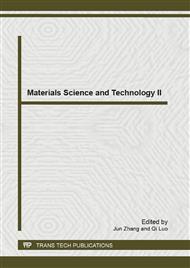p.3
p.10
p.15
p.25
p.30
p.36
p.40
p.44
Experimental Correlation for the Effect of Metallurgical Parameters on the Hardness of 356 and 319 Aluminum Alloys Using Minitab Software
Abstract:
The present study was undertaken to investigate the effect of metallurgical parameters on the hardness and microstructural characterisations of as-cast and heat-treated 356 and 319 alloys, with the aim of adjusting these parameters to produce castings of suitable hardness and Fe-intermetallic volume fractions for subsequent use in studies relating to the machinability of these alloys. Hardness measurements were carried out on specimens prepared from 356 and 319 alloys in the as-cast and heat-treated conditions, using different combinations of grain refining, Sr-modification, and alloying additions. Aging treatments were carried out at 155 °C, 180 °C, 200 °C, and 220 °C for 4 h, followed by air cooling, as well as at 180 °C and 220 °C for 2, 4, 6, and 8 h. Peak hardness was observed in 356 alloys when aging was carried out at 180oC/4h. In the case of unmodified or modified 356 alloys containing mostly α-Fe intermetallics, aging at 180 °C up to 8h produced a sharp rise in hardness during the first two hours of aging, followed by a broad peak or plateau over the 2-8 h aging period. Aging at 220 °C revealed a hardness peak at 2h aging time for both 356 and 319 alloys. Addition of Mg to unmodified or modified 319 alloys produced a remarkable increase in hardness at all aging temperatures. This may be explained on the basis of the combined effect of Cu-and Mg-intermetallics in the 319 alloys, where hardening during aging occurs by the cooperative precipitation of Al2Cu and Mg2Si phase particles.[, ] For 356 and 384 alloys, the Mg-containing 319 alloys (~same Mg concentration as in 356 alloys) displayed higher hardness values than the 356 alloys for the aged condition, where hardening occurs by cooperative precipitation of Al2Cu and Mg2Si phase particles in 319 alloys compared to only Mg2Si precipitation in the case of 356 alloys.
Info:
Periodical:
Pages:
15-24
Citation:
Online since:
July 2013
Authors:
Price:
Сopyright:
© 2013 Trans Tech Publications Ltd. All Rights Reserved
Share:
Citation:


